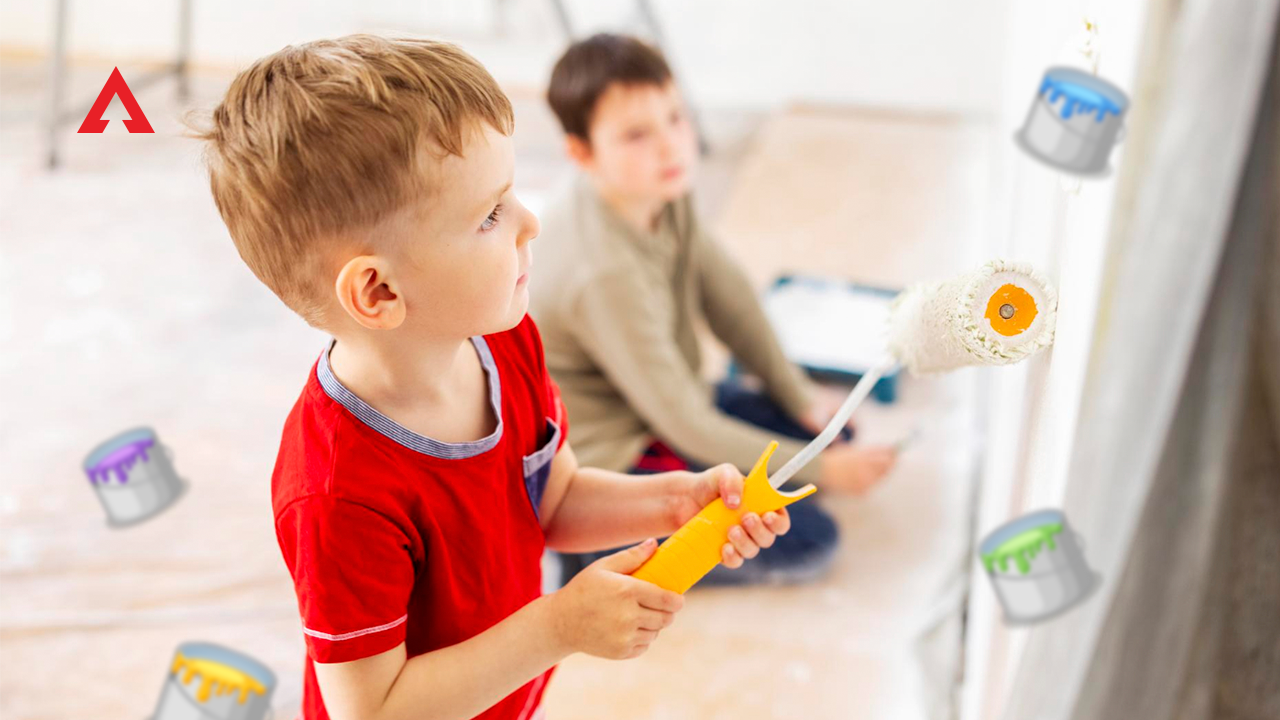Mon, Dec 16, 2024
Read in 5 minutes
What should you look for when you have decided to paint a children’s room? The paint should be harmless but also hardy to accommodate the room and easy to breathe too.

Painting your child’s room can be an exciting project, but choosing the right paint is crucial for ensuring a safe, healthy, and durable environment. With numerous paint ideas and types available, it can be overwhelming to decide what’s best. This guide will help you understand the key considerations and options for selecting the best paint for children’s rooms.
One of the most important factors when selecting paint for a child’s room is ensuring it is safe. Volatile Organic Compounds (VOCs) are chemicals found in many paints that can emit harmful gases as the paint dries and even long after. Opting for low-VOC or zero-VOC paints can significantly reduce indoor air pollution and health risks.
Low-VOC paints have reduced levels of these compounds, making them safer for indoor use, especially in spaces where children spend a lot of time. Zero-VOC paints are even better, as they contain negligible amounts of these compounds. Many brands offer high-quality low-VOC and zero-VOC options.
Non-toxic paints go a step further by eliminating many of the harmful chemicals found in conventional paints. These paints are often made from natural ingredients, such as plant oils and minerals, making them a great choice for environmentally conscious parents. Look for non-toxic and natural paint options that are certified safe for children’s rooms.
Children’s rooms are high-traffic areas prone to spills, stains, and scuffs. Choosing washable and scrubbable paints ensures that the walls can withstand frequent cleaning without losing their luster. These paints are formulated to be durable and resistant to stains, making maintenance easy and effective. Look for products labeled as “washable” or “scrubbable” to keep your child’s room looking fresh and clean.
Stain-resistant paints are another excellent option for children’s rooms. These paints are designed to repel liquids and prevent stains from setting in, which is particularly useful for younger children who are prone to spills and messes. Choosing stain-resistant paints can make maintenance much easier, ensuring the room remains clean and beautiful over time.
Eggshell finish is a popular choice for children’s rooms due to its balance between sheen and durability. It offers a low-luster finish that is more forgiving of wall imperfections than higher gloss paints while still being easy to clean. This makes it a versatile and practical option for any child’s bedroom. This is one such paint idea that you can try.
Satin finish paints provide a slightly higher sheen than eggshell and are highly durable and washable. This finish is perfect for high-activity areas like children’s rooms where walls need to endure frequent cleaning. Satin finish also adds a subtle, elegant glow to the walls, enhancing the overall aesthetic of the room.
For areas that need extra durability, such as trim and doors, a semi-gloss finish is ideal. Semi-gloss paint is highly resistant to moisture and stains, making it easy to wipe down and clean. While it might be too shiny for all the walls in a bedroom, it’s perfect for accent areas that require more protection and durability.
If your child has allergies or sensitivities, choosing hypoallergenic paints can help create a healthier environment. Hypoallergenic paints are formulated to minimize allergens and irritants, making them a suitable choice for sensitive individuals. These paints are often low in VOCs and free from harsh chemicals, providing peace of mind for parents. These paint types have gained considerable praise over the years as people are getting more and more knowledgeable.
For environmentally conscious families, eco-friendly paints made from sustainable materials and natural ingredients are a great choice. These paints minimize environmental impact and promote a healthier indoor environment. Look for certifications like GreenGuard or Green Seal to ensure the paint meets stringent environmental standards. These paint ideas are trendy nowadays as they are safer for children too.
Deciding whether to tackle the painting job yourself or hire a professional painting company depends on several factors, including your time, budget, and skill level. While DIY projects can be cost-effective and rewarding, hiring a professional ensures a high-quality finish and saves you time and effort. Professional painters have the expertise to handle all aspects of the job, from preparation to cleanup, ensuring a flawless result.
Before you start painting, make sure to prepare the room properly. Remove any furniture or cover it with drop cloths, and protect the floor with plastic sheeting. Clean the walls to remove dust and grease, and fill any holes or cracks with spackle. Proper preparation ensures a smooth and long-lasting finish
Choosing the right paint colors for bedrooms can make a significant impact on the overall feel of the space. Soft, calming colors like pastels are ideal for creating a serene environment, while brighter colors can add energy and playfulness. Consider involving your child in the color selection process to ensure they love their new room. Popular bedroom painting ideas include accent walls, stripes, and using stencils for fun patterns.
When it comes to painting your child’s room, safety and durability should be top priorities. By choosing low-VOC or zero-VOC paints, non-toxic options, and finishes that withstand frequent cleaning, you can create a beautiful and safe environment for your child.
Additionally, considering allergy-friendly and eco-friendly paints can further enhance the health and sustainability of your home. Whether you decide to tackle the project yourself or hire a professional, following these guidelines and tips will help ensure a successful and enjoyable painting experience for you and your child. Happy painting!